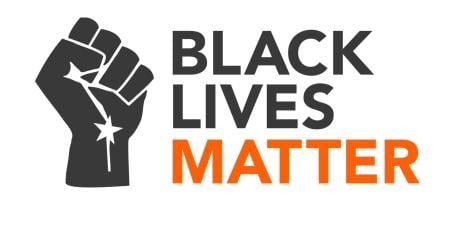Introduction
The pace of development of new technologies and their application to humanitarian purposes has outstripped careful, ethical consideration of the consequences of their use. Technologies that were once available only to governments and military have become affordable and within reach of individuals and humanitarian organizations. This diversification of uses from initial military applications brings with it questions that reflect long-recognized challenges of humanitarian work. When the international community responds to military conflict or natural disaster, how do we ensure that the voices and perspectives of members of the affected communities are heard? What threats to the core humanitarian principles of impartiality and respect for the independence of those being aided do these technologies bring with them? We consider here two examples of technologies that highlight these challenges: drone use in humanitarian disaster response, and satellite imagery analysis to document and prevent mass atrocities.
Military Use of Drones
The term “drone” refers to many different types of machines, some small enough to be handheld and some large enough to drop bombs and fly at higher altitudes than those being used for documenting the extent of earthquake damage [1]. Drones are better known outside of humanitarian aid, which might explain why the less sinister-sounding term “unmanned aerial vehicles” (UAVs) is used in most contexts that advocate for humanitarian applications [2, 3]. The US military has been conducting drone strikes in Pakistan for a decade, averaging one every three days in 2010 (a number which has since decreased) [4]. These strikes target people who are believed to be participating in terrorist organizations, but they have also killed large numbers of civilians—an estimated 3,000 in Pakistan [5, 6]. The effect of these continued strikes on Pakistani civilians has been documented in the report, Living under Drones [7]. In addition to causing death and injury, the repeated strikes and frequent hovering of drones has resulted in civilians’ becoming afraid to help injured victims, produced psychological trauma, and led to parents’ keeping their children home from school out of fear [7].
Drone Use in Humanitarian Response
Humanitarian efforts in response to wars and disasters have a long history of ethical challenges and mistakes. Images of food aid being dropped off the backs of pick-up trucks are often used to illustrate past failures to respect the dignity of affected populations and to ensure equal access to aid for vulnerable groups. Increasing emphasis has been placed on the inclusion of affected communities and organizations in planning the response to a disaster. These principles cannot be abandoned when new technologies such as drones are introduced into humanitarian response.
The use of drones in humanitarian aid has a short history, but it has proliferated rapidly enough and generated enough interest that the United Nations (UN) Office of Coordination of Humanitarian Affairs (OCHA) produced a report on the topic in June of 2014 [8]. The potential uses are multifaceted and are likely to grow rapidly as technology and coordination improve. They include mapping of disaster-affected areas, search and rescue assistance, and procurement and delivery of aid materials. These applications, especially the mapping of damaged areas, already showed promise during the Haiti 2010 earthquake [9], and drones have been employed similarly in Nepal, producing powerful images of the devastation caused by the earthquake [10]. In addition to their use in mapping, these images received a great deal of media attention for possibly aiding in the location and rescue of trapped earthquake survivors [10]. With drones’ cutting-edge technology and dramatic human rescue stories, it is easy to see why. It has also been suggested that drones could be used to deliver emergency supplies to hard-to-reach locations [11].
If mapping, surveying, and provision of food and non-food items are to be conducted by drones, however, already marginalized voices of disaster victims must be protected and the expectations of people accustomed to seeing military drones flying overhead must be recognized.
Is it fair to consider the connections between these two diametrically opposed uses of drone technology? After all, the use of drones is increasing rapidly, and they are being deployed for a wide range of purposes such as rainforest mapping and home delivery [12, 13]. In the technology-obsessed US, excitement over new toys for recording ski videos is far more salient than fear over big-brother style surveillance [14].
Yet it is crucial to consider the connection between humanitarian and military uses of drones. Civil-military cooperation is central to much of US humanitarian response in general, with the military possessing immense and unparalleled logistical capacity thanks to its $520 billion budget (about 40 percent of the world’s total military expenditure) [15, 16]. This capacity makes the necessity of military participation in humanitarian response inevitable for the foreseeable future. Because of its extensive involvement in wars across the world and widespread military bases, the US military is, to some extent, the face of the US in many countries. Many of these countries also happen to be among the most vulnerable to natural disasters.
These considerations suggest that the actions and image of the US military have critical implications for humanitarian response. Two weeks after the April 25 earthquake in Nepal, the Nepalese government issued a ban on the use of drones in the humanitarian response without prior permission from the Civil Aviation Authority [17], due to concern over the gathering of sensitive information and the photographing of important cultural heritage sites. This demonstrates that cooperation with those who are receiving aid must be part of the introduction of drones in humanitarian response.
In a report, the UN Special Rapporteur on extrajudicial, summary or arbitrary executions raised concerns that the use of drones and other remote technologies in police work could remove protections against the unnecessary use of force and violate human rights. The report specifically brought up issues of accountability, stating “The decreased personal involvement of police officers in the deployment of force raises the question, among others, of who is responsible if things go wrong” [18]. The UN, however, has itself used unarmed drones for surveillance in the Democratic Republic of the Congo as a deterrent to violence against civilians [19]. While its purpose is distinct, this surveillance does not seem qualitatively different from military or police surveillance using drones. This contrast highlights that the humanitarian potential and military applications of drones are ethically linked. Surveillance in conflict areas for the purposes of deterrence and documentation is also performed using satellite imagery. Additional ethical issues arise with this technology, which we discuss below.
Humanitarian Use of Satellite Imagery Analysis
In 2012, the Harvard Humanitarian Initiative (HHI) officially launched the Signal Program on Human Security and Technology, which plans to “conduct participatory action research about how technology can prevent and document threats to human rights” and translate lessons learned into the “first-ever research and academic program for the practice, study and teaching of crisis mapping” [20]. The program builds on the pilot phase of the Satellite Sentinel Project (SSP), which monitored threats to human security along the Sudan-South Sudan border, galvanizing the practice of predicting threats to civilians living in conflict zones before they materialized. Since 2010, SSP has analyzed satellite imagery and built maps and software. The reports to which this information contributed confirmed the destruction of more than six villages in Sudan and provided evidence of eight mass grave sites and indiscriminate civilian bombardment in South Kordofan, and they were subsequently used by the International Criminal Court [21]. The promises of the technology are significant, ranging from, at best, effective tracking of warning signs of threats to human rights (such as an accumulation of troops or tanks in an area) before they occur to, at worst, documenting atrocities and gathering evidence for future investigations.
Ethical Ramifications of the Program
While imagery analysis is instrumental in bringing human rights violations to light, it is often insufficient evidence of human rights violations by itself. Corroborating evidence is required, and the ability to obtain direct evidence is often limited [22]. HHI has developed its own protocol for what constitutes an adequate level of certainty for analytic conclusions from the imagery and geo-coded data [23]. While this has improved the predictive capabilities of the research, it is not clear whether this is sufficient to justify action and decision-making at the policy level. Since the analysts of the program do not have access to classified government intelligence, the outcomes of the analysis cannot be compared and reassessed based on the totality of available evidence, making the relevance of the findings unclear [23].
An article in the International Business Times succinctly presented the crux of the ethical dilemmas surrounding the widespread adoption of this technology: there is no precedent for its use and the collaborative project is “making the rules as they go, albeit rules within the strictures of international law” [24]. Since the satellites are not technically in Sudan’s airspace (and hence not a violation of national sovereignty) and are owned by a private corporation rather than a government, there is no violation of international law [24]. In addition to legality, though, the lack of precedent makes a careful ethical appraisal crucial. When is it justified to act on incomplete evidence in order to prevent harm if the consequences of this action are difficult to predict? In answering this question, significant questions must be resolved about the potential for cross-collaboration between research analysts, governments, and international bodies and about the formulation of a new legal code for those countries that are being mapped.
Conclusion
It is inevitable that new technologies will be incorporated into the field of humanitarian response, and many will help to save lives. Each technology and each new application will bring with it unintended consequences that must be carefully considered, as we have shown in the cases of drones and satellite imagery analysis. There is a danger in ignoring these consequences in the midst of enthusiasm for revolutionary potential. As our methods of providing care after disasters and protecting civilians during conflict evolve, we must always strive to do better in working with and respecting the dignity of those affected.
References
-
Currier C. Everything you ever wanted to know about drones. ProPublica. May 31, 2012. http://www.propublica.org/article/everything-you-ever-wanted-to-know-about-drones. Accessed August 12, 2015.
-
Humanitarian UAV Network website. http://uaviators.org/. Accessed August 12, 2015.
-
D’Onofrio A. Drones ‘R’ us? Reflections on use of UAVs in humanitarian interventions. International Rescue Committee. September 4, 2014. http://www.rescue.org/blog/drones-r-us-reflections-use-uavs-humanitarian-interventions. Accessed August 12, 2015.
-
Bureau of Investigative Journalism. Get the data: drone wars. http://www.thebureauinvestigates.com/category/projects/drones/drones-graphs/. Accessed August 12, 2015.
-
Pitch Interactive. Out of sight, out of mind. A visualization of all documented drone strikes in Pakistan since 2004. http://drones.pitchinteractive.com/. Accessed August 12, 2015.
-
Serle J. More than 2,400 dead as Obama’s drone campaign marks five years. Bureau of Investigative Journalism. January 23, 2014. http://www.thebureauinvestigates.com/2014/01/23/more-than-2400-dead-as-obamas-drone-campaign-marks-five-years/. Accessed August 12, 2015.
-
Stanford Law School International Human Rights and Conflict Resolution Clinic; New York University Global Justice Clinic. Living under Drones: Death, Injury, and Trauma to Civilians from US Drone Practices in Pakistan. September 2012. http://chrgj.org/wp-content/uploads/2012/10/Living-Under-Drones.pdf. Accessed August 12, 2015.
-
United Nations Office for the Coordination of Humanitarian Affairs. Unmanned aerial vehicles in humanitarian response. June 2014. https://docs.unocha.org/sites/dms/Documents/Unmanned%20Aerial%20Vehicles%20in%20Humanitarian%20Response%20OCHA%20July%202014.pdf. Accessed May 7, 2015.
-
Hodge N. US diverts spy drone from Afghanistan to Haiti. Wired. January 15, 2010. http://www.wired.com/2010/01/pentagon-shares-earthquake-images-from-high-flying-spy-drone/. Accessed August 21, 2015.
-
Hodge N. US diverts spy drone from Afghanistan to Haiti. Wired. January 15, 2010. http://www.wired.com/2010/01/pentagon-shares-earthquake-images-from-high-flying-spy-drone/. Accessed August 21, 2015.
-
Hickey S. Humanitarian drones to deliver medical supplies to roadless areas. Guardian. March 30, 2014. http://www.theguardian.com/world/2014/mar/30/humanitarian-drones-medical-supplies-no-roads-technology. Accessed August 12, 2015.
-
ConservationDrones.org website. http://conservationdrones.org/. Accessed August 12, 2015.
-
Amazon. Amazon Prime Air. http://www.amazon.com/b?node=8037720011. Accessed August 12, 2015.
-
Meet Lily, a camera drone that follows you automatically. NBC News. May 12, 2015. http://www.nbcnews.com/tech/gadgets/meet-lily-camera-drone-follows-you-automatically-n357811. Accessed August 12, 2015.
-
Office of the Undersecretary of Defense (Comptroller)/Chief Financial Officer. Overview: United States Department of Defense fiscal year 2014 budget request. April 2013. http://comptroller.defense.gov/Portals/45/Documents/defbudget/fy2014/FY2014_Budget_Request_Overview_Book.pdf. Accessed August 12, 2015.
-
Shah A. World military spending. Updated June 30, 2013. http://www.globalissues.org/article/75/world-military-spending. Accessed August 12, 2015.
-
Nepal bans drones in its skies fearing leak of sensitive info. Times of India. May 6, 2015. http://timesofindia.indiatimes.com/world/south-asia/Nepal-bans-drones-in-its-skies-fearing-leak-of-sensitive-info/articleshow/47177061.cms. Accessed August 12, 2015.
-
United Nations News Centre. Growing use of drones in law enforcement may violate human rights, warns UN expert. October 22, 2014. http://www.un.org/apps/news/story.asp?NewsID=49148#.VcvB9_lVhHz. Accessed August 12, 2015.
-
United Nations News Centre. UN launches unmanned surveillance aircraft to better protect civilians in vast DR Congo. December 3, 2013. http://www.un.org/apps/news/story.asp?NewsID=46650#.VcvCdvlVhHw. Accessed August 12, 2015.
-
Harvard Humanitarian Initiative. HHI concludes Satellite Sentinel Project pilot, launches Signal Program. Harvard Humanitarian. September 2012. http://archive.constantcontact.com/fs077/1102238942357/archive/1110917300594.html. Accessed August 21, 2015.
-
Harvard Humanitarian Initiative. Satellite Sentinel Project: making the world a witness: report on the pilot phase, December 2010-June 2012. http://www.satsentinel.org/sites/default/files/Making%20the%20World
%20a%20Witness.pdf. Accessed August 12, 2015. -
Kroker P. Emerging issues facing the use of remote sensing evidence for international criminal justice. Harvard Humanitarian Initiative. http://hhi.harvard.edu/sites/default/files/publications/emerging_issues
_rs_and_ij_kroker.pdf. Accessed August 12, 2015. -
Raymond NA, Davies BI, Card BL, Al Achkar Z, Baker IL. While we watched: assessing the impact of the Satellite Sentinel Project. Georget J Int Aff. July 26, 2013. http://journal.georgetown.edu/while-we-watched-assessing-the-impact-of-the-satellite-sentinel-project-by-nathaniel-a-raymond-et-al/. Accessed August 12, 2015.
-
Tovrov D. George Clooney and the new ethics of satellite surveillance. International Business Times. March 16, 2012. http://www.ibtimes.com/george-clooney-new-ethics-satellite-surveillance-214303. Accessed August 12, 2015.



